Quantitative Blood Loss Obstetrics Chart Audit Chart reviews monthly EPIC audits of all vaginal deliveries tracked compliance based on documentation of tracking the use of one or two under buttock drape with the physician s name delivery date time RN s name and values of QBL EBL and recovery QBL
Review measurement techniques for the quantification and cumulation of blood loss What is Quantitative Blood Loss QBL Systematic use of volumetric containers and weighing scales or computerized image recognition to quantify blood loss during surgical procedures or OB Hemorrhage Toolkit V3 0 OB Hemorrhage Task Force and Update Task Force Hypertensive Disorders of Pregnancy Toolkit Hypertensive Disorders of Pregnancy Task Force Sepsis Toolkit Maternal Sepsis Task Force Advisory Group Support Vaginal Birth and Reduce Primary Cesareans Toolkit Supporting Vaginal Birth and Reducing Primary Cesarean
Quantitative Blood Loss Obstetrics Chart Audit

Quantitative Blood Loss Obstetrics Chart Audit
https://d3i71xaburhd42.cloudfront.net/2b4cb2fcf646c53b5d26b27d5705b39984dc00e5/2-Figure1-1.png

PDF Quantitative Blood Loss A Validation Study Hayat Ameri Academia edu
https://0.academia-photos.com/attachment_thumbnails/84707500/mini_magick20220422-2809-zi2tc5.png?1650676656
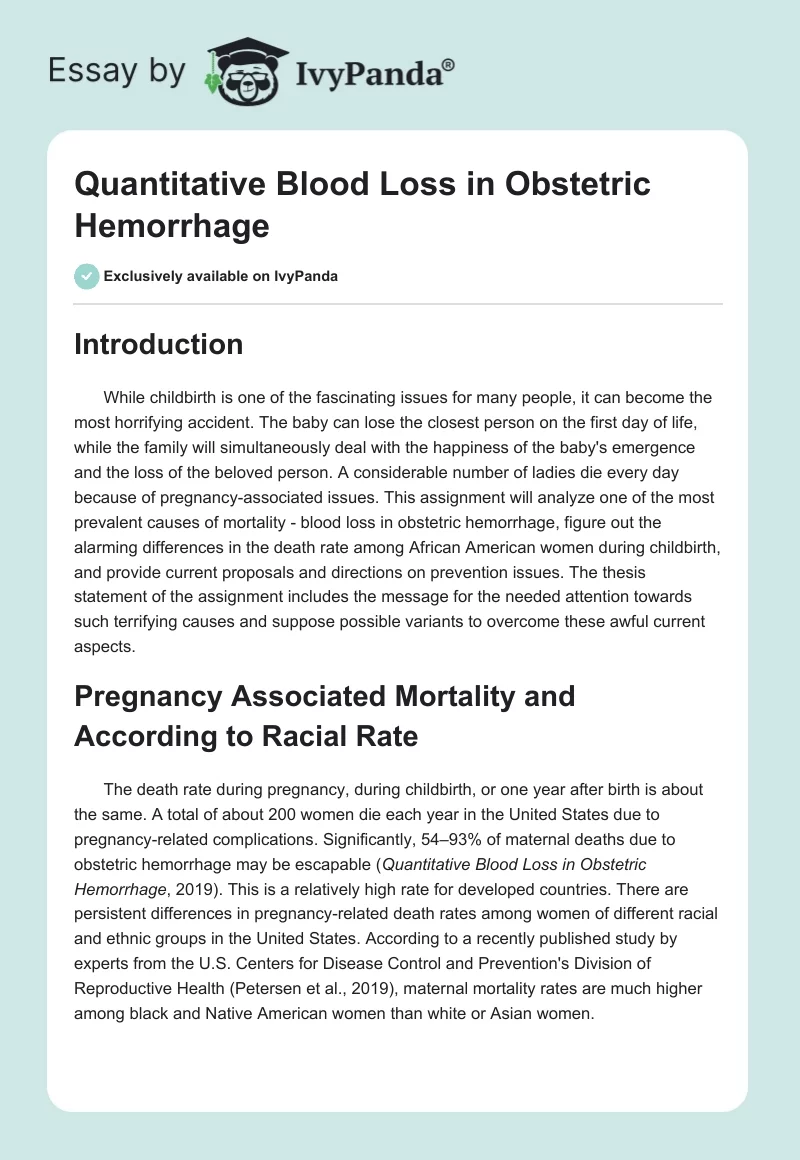
Quantitative Blood Loss In Obstetric Hemorrhage 1217 Words Research Paper Example
https://ivypanda.com/essays/wp-content/uploads/slides/205/205873/quantitative-blood-loss-in-obstetric-hemorrhage-page1.webp
ACOG released new guidance Nov 2019 on quantification of blood loss during an obstetrical hemorrhage While there are multiple recommendations a central theme of the document is that accuracy of quantitative measurement is superior to visual estimation A multidisciplinary approach is recommended and in addition Practice from visual estimation of blood loss to quanti cation of blood loss QBL and to replace estimation of blood loss with QBL for at least 85 of vaginal births during a 3 month period
Educate all staff on how to quantify cumulative blood loss Educate all staff to follow vital sign trends and that abnormal vital signs are late signs of bleeding Include the amount of blood loss information during patient care handoffs Aim Review and discuss the general and massive hemorrhage protocols at least every two years To provide a simple method for nurses and providers to achieve quantification of blood loss QBL with all births vaginal and cesarean To eliminate the use of estimated blood loss EBL and replace it with QBL in all births and situations of obstetric hemorrhage
More picture related to Quantitative Blood Loss Obstetrics Chart Audit

Quantitative Blood Loss In Obstetric Hemorrhage 1217 Words Research Paper Example
https://ivypanda.com/essays/wp-content/uploads/slides/205/205873/quantitative-blood-loss-in-obstetric-hemorrhage-page2.webp
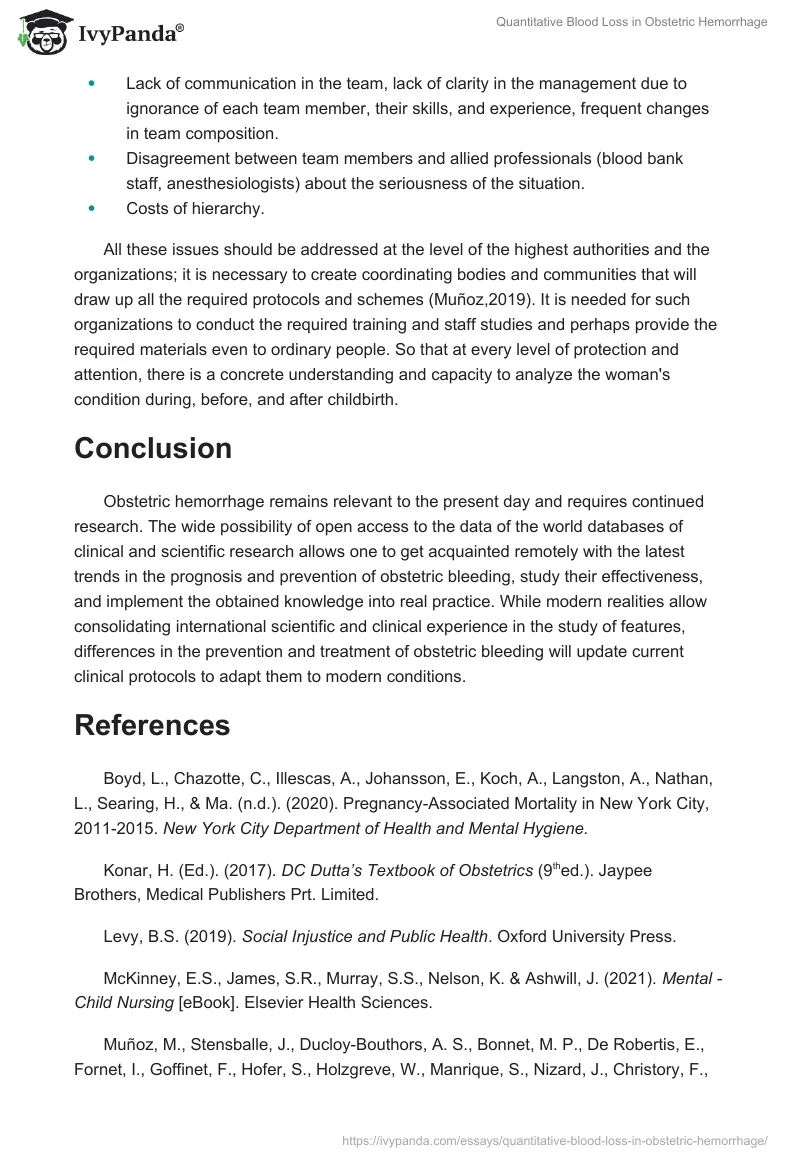
Quantitative Blood Loss In Obstetric Hemorrhage 1217 Words Research Paper Example
https://ivypanda.com/essays/wp-content/uploads/slides/205/205873/quantitative-blood-loss-in-obstetric-hemorrhage-page4.webp
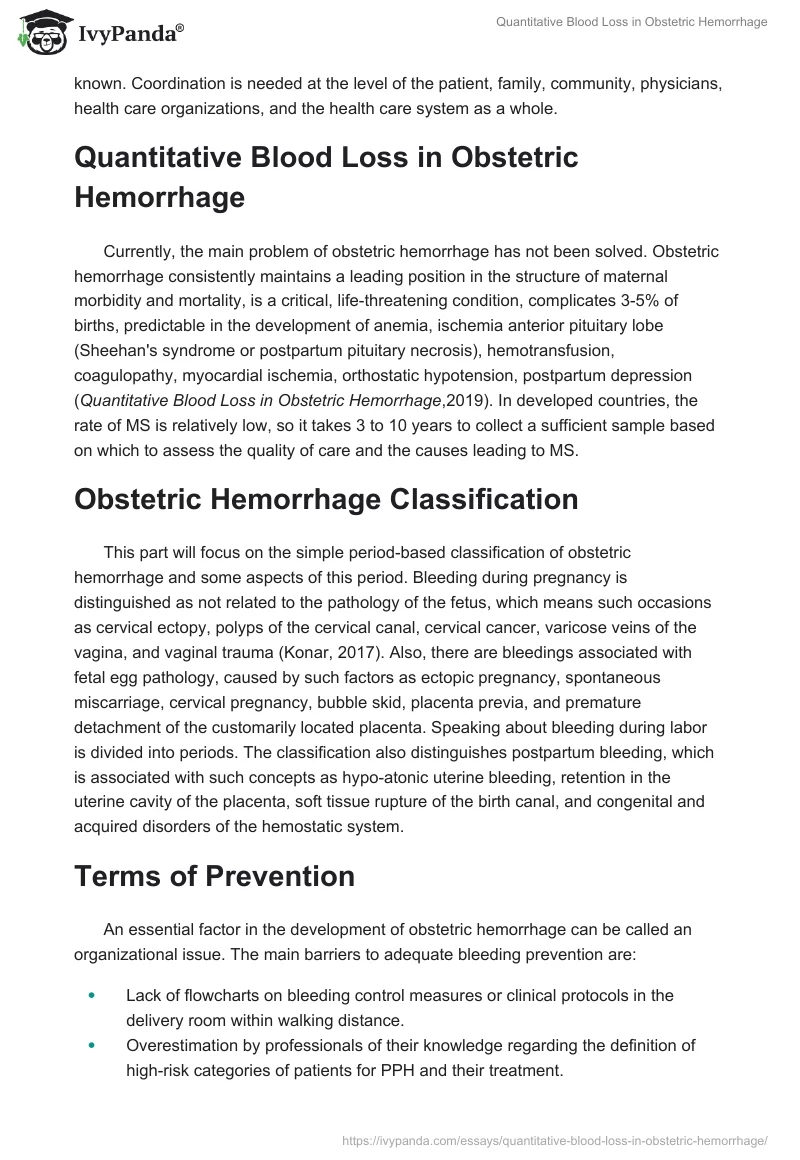
Quantitative Blood Loss In Obstetric Hemorrhage 1217 Words Research Paper Example
https://ivypanda.com/essays/wp-content/uploads/slides/205/205873/quantitative-blood-loss-in-obstetric-hemorrhage-page3.webp
Quantification of blood loss is an objective measurement that is recommended for the early identification of hemorrhage for all births ACOG 2019 CMQCC 2015 Main et al 2015 Seacrist et al 2019 Implementation of obstetric hemorrhage bundles that include QBL have been found to significantly reduce maternal morbidity ACOG 2019 Implementation of quantitative assessment of blood loss includes the following two items 1 use of direct measurement of obstetric blood loss quantitative blood loss and 2 protocols for collecting and reporting a cumulative record of blood loss postdelivery
Quantification of blood loss QBL is considered a more reliable measurement Hancock et al 2015 yielding an error rate of less than 15 AWHONN 2015 QBL is associated with improved assessment of a woman s condition thereby facilitating more AWHONN recommends that cumulative blood loss be formally measured or quantified after every birth A leading cause of maternal morbidity and mortality is failure to recognize excessive blood loss during childbirth The Joint Commission 2010
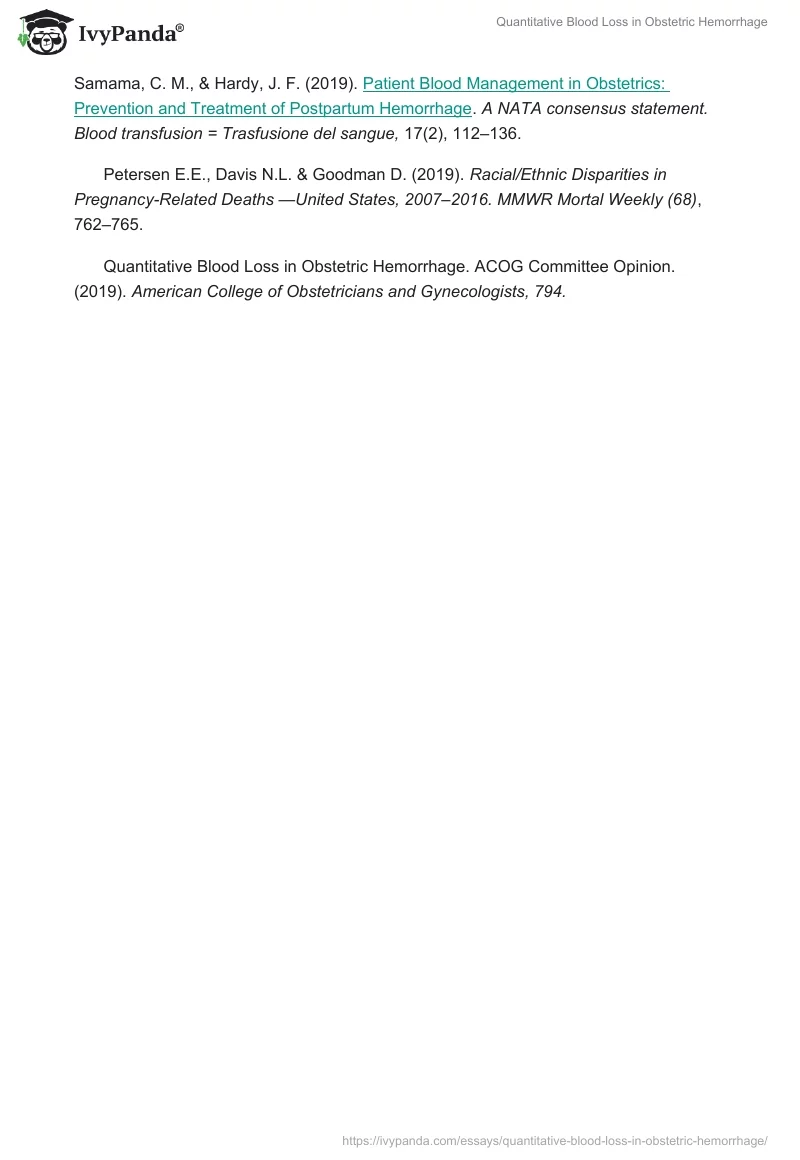
Quantitative Blood Loss In Obstetric Hemorrhage 1217 Words Research Paper Example
https://ivypanda.com/essays/wp-content/uploads/slides/205/205873/quantitative-blood-loss-in-obstetric-hemorrhage-page5.webp

Continue Chart Audit For Quantitative Blood Loss Woods Althat1974
https://www.hkmj.org/system/files/hkmj208743-table-3.jpg

https://www.hopkinsmedicine.org › media › nursing › docu…
Chart reviews monthly EPIC audits of all vaginal deliveries tracked compliance based on documentation of tracking the use of one or two under buttock drape with the physician s name delivery date time RN s name and values of QBL EBL and recovery QBL

https://web.mhanet.com › wp-content › uploads
Review measurement techniques for the quantification and cumulation of blood loss What is Quantitative Blood Loss QBL Systematic use of volumetric containers and weighing scales or computerized image recognition to quantify blood loss during surgical procedures or

PDF 699 Actual Blood Loss During Vaginal Delivery 30 937 Quantitative Blood Loss Measurements

Quantitative Blood Loss In Obstetric Hemorrhage 1217 Words Research Paper Example

Mean Quantitative Blood Loss QBL By Duration Of Intrapartum Oxytocin Download Scientific

PDF 993 Quantitative Blood Loss A Potential Screening Tool To Prevent Unnecessary Postpartum

Obstetrics Gynecology

PDF Outcome Of Audit And Education On Blood Transfusion Practice In Obstetrics Setting

PDF Outcome Of Audit And Education On Blood Transfusion Practice In Obstetrics Setting

Quantitative Blood Loss Is A More Accurate Measure Of Blood Obstetrics Gynecology

Pictorial Blood Assessment Chart Download Printable PDF Templateroller
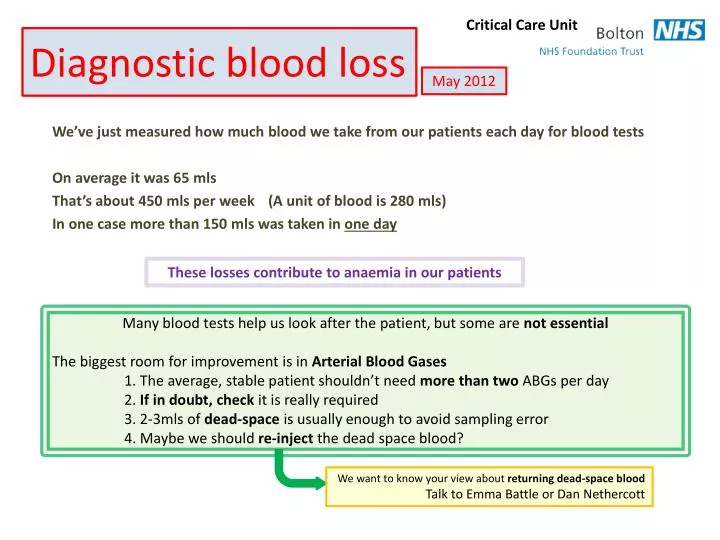
PPT Diagnostic Blood Loss PowerPoint Presentation Free Download ID 4342352
Quantitative Blood Loss Obstetrics Chart Audit - Educate all staff on how to quantify cumulative blood loss Educate all staff to follow vital sign trends and that abnormal vital signs are late signs of bleeding Include the amount of blood loss information during patient care handoffs Aim Review and discuss the general and massive hemorrhage protocols at least every two years